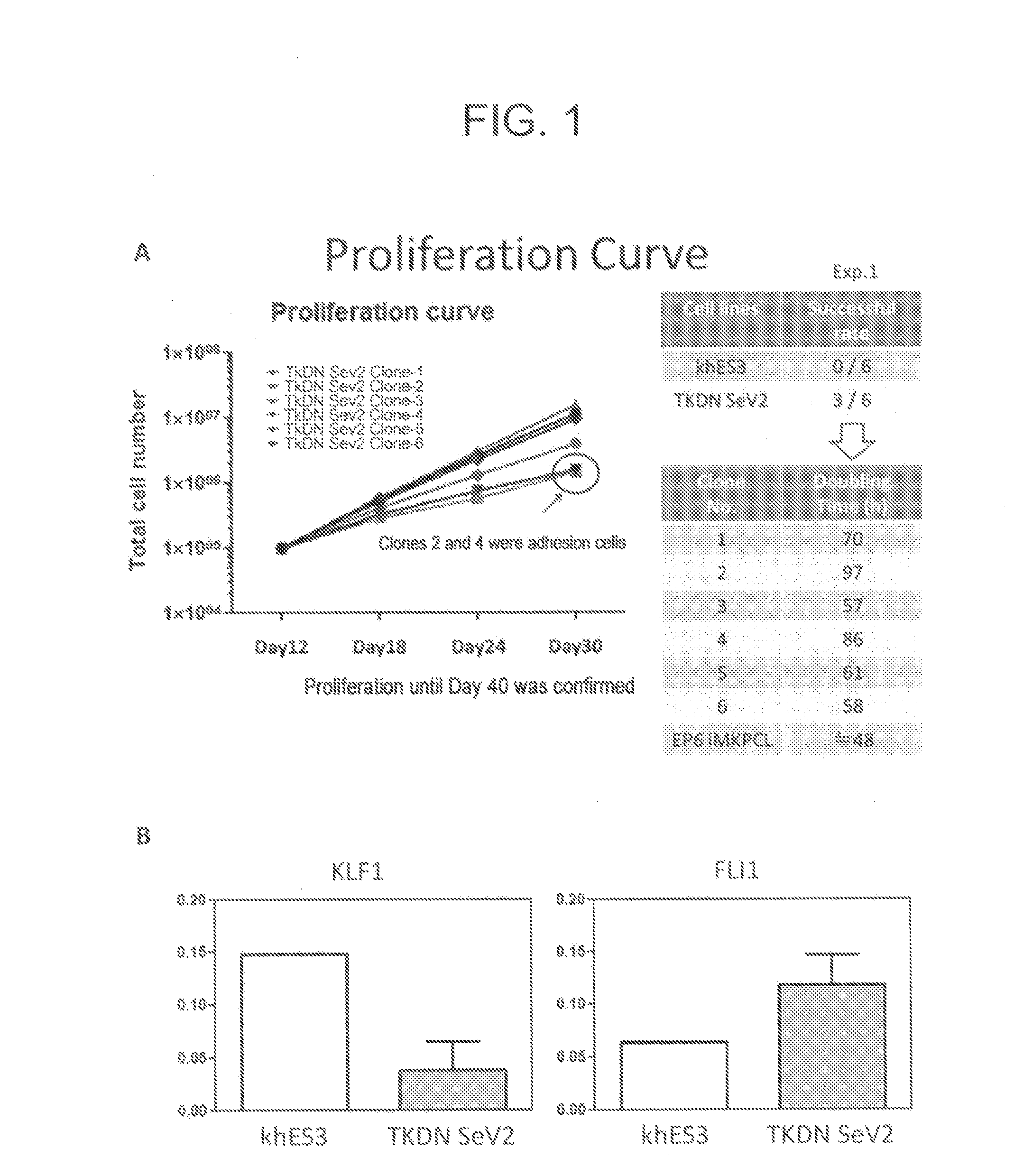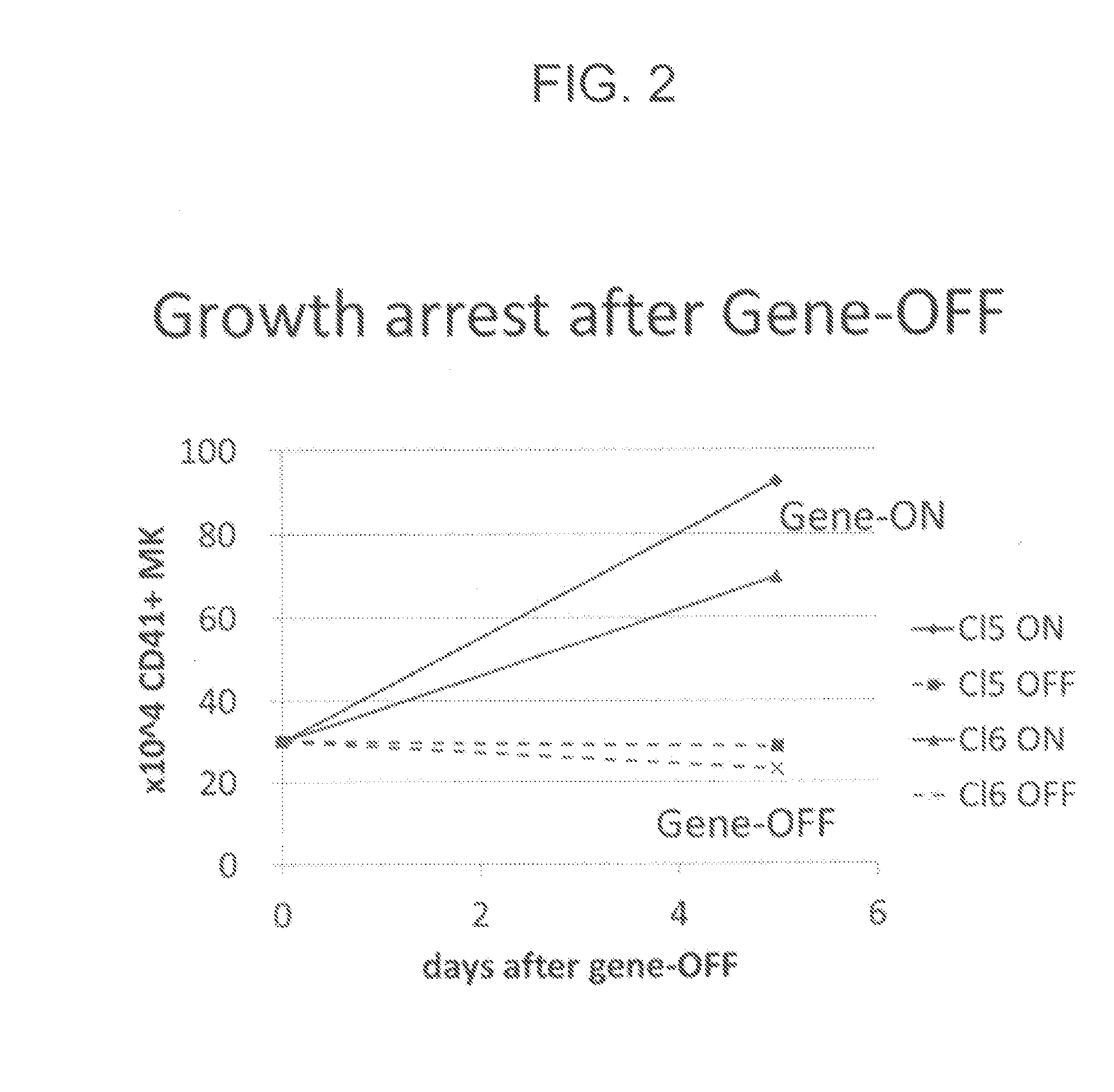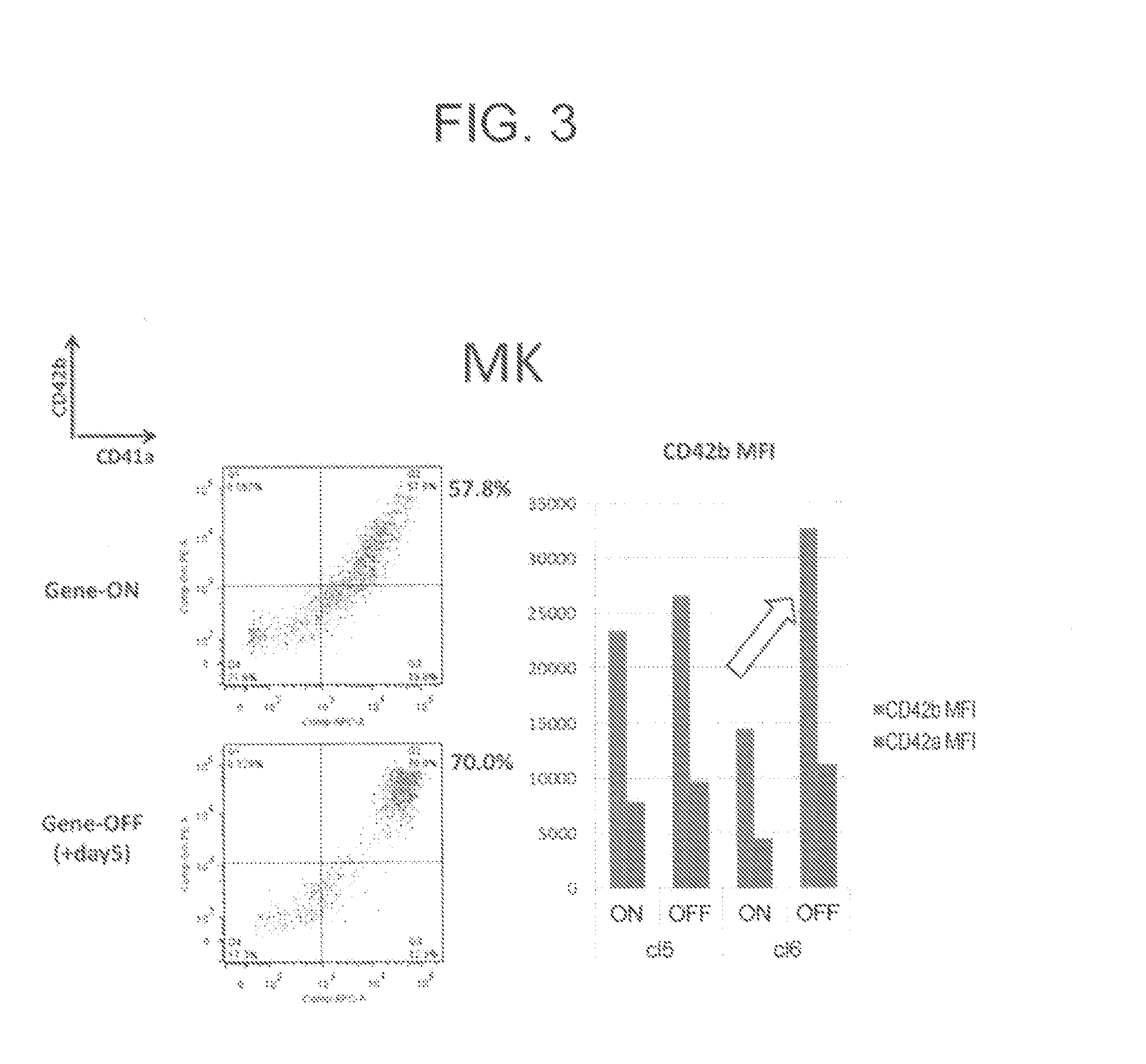Production methods for megakaryocytes and platelets
a megakaryocyte and platelet technology, applied in the field of megakaryocytes and platelets, can solve the problems of defective spindle extension, defective contractile ring formation, etc., and achieve the effect of clinical application
- Summary
- Abstract
- Description
- Claims
- Application Information
AI Technical Summary
Benefits of technology
Problems solved by technology
Method used
Image
Examples
example 1
1) Preparation of Hematopoietic Progenitor Cells from ES / iPS Cells
[0178]Human ES cells (khES3: obtained from Kyoto University) and iPS cells (TKDN SeV2: iPS cells derived from human fetus dermal fibroblasts established by use of Sendai virus; and 585A1, 585B1, 606A1, 648B1 and 692D2: iPS cells derived from human peripheral blood mononuclear cells established by use of episomal vector described in Okita K, et al., Stem Cells 31, 458-66, 2012) were subjected to culture in accordance with the method described in Takayama N., et al. J Exp Med. 2817-2830 (2010) and differentiated into hematocytes. More specifically, human ES / iPS cell colonies were co-cultured with C3H10T1 / 2 feeder cells in the presence of 20 ng / mL VEGF (R&D SYSTEMS) for 14 days to prepare Hematopoietic Progenitor Cells (HPCs)). The culture condition was 20% O2, 5% CO2 (hereinafter, the culture condition was the same unless otherwise specified).
2) Viral Infection of Hematopoietic Progenitor Cells
[0179]Onto a 6-well plate ...
example 2
1) Induction of Megakaryocytic Progenitor Cells that can be Proliferated in Expanding Culture by Use of c-MYC and BMI1
[0198]To KhES3-derived HPCs obtained by the method described in Example 1, (1) c-Myc alone, (2) Bmi1 alone, (3) c-MYC and sh-p53, (4) c-MYC and BCL-XL, (5) c-MYC and sh-ARF, (6) c-MYC and BMI1, or (7) c-MYC, sh-INK4A and sh-ARF was introduced by use of a single retrovirus vector per gene. The resultant HPCs were cultured in a basal medium supplemented with 50 ng / mL TPO and 50 ng / mL SCF. In the cases where at least c-MYC was introduced, megakaryocytic progenitor cells of CD41a+, CD42a+, CD42b+ and CD9+ were obtained. The culture was further continued. As a result, HPCs having (6) c-MYC and BMI1, and (7) c-MYC, sh-INK4A and sh-ARF were successfully proliferated in expanding culture continuously for two months (FIG. 7A). The retrovirus vectors used for introduction of genes were pMXs retro-vector (see, Takahashi K, et al., Cell; 131: 861-872, 2007 or Ohmine K, et al., O...
PUM
| Property | Measurement | Unit |
|---|---|---|
| temperature | aaaaa | aaaaa |
| temperature | aaaaa | aaaaa |
| temperature | aaaaa | aaaaa |
Abstract
Description
Claims
Application Information
 Login to View More
Login to View More - R&D
- Intellectual Property
- Life Sciences
- Materials
- Tech Scout
- Unparalleled Data Quality
- Higher Quality Content
- 60% Fewer Hallucinations
Browse by: Latest US Patents, China's latest patents, Technical Efficacy Thesaurus, Application Domain, Technology Topic, Popular Technical Reports.
© 2025 PatSnap. All rights reserved.Legal|Privacy policy|Modern Slavery Act Transparency Statement|Sitemap|About US| Contact US: help@patsnap.com



